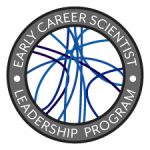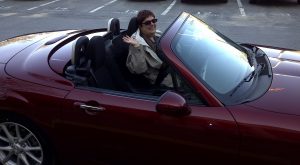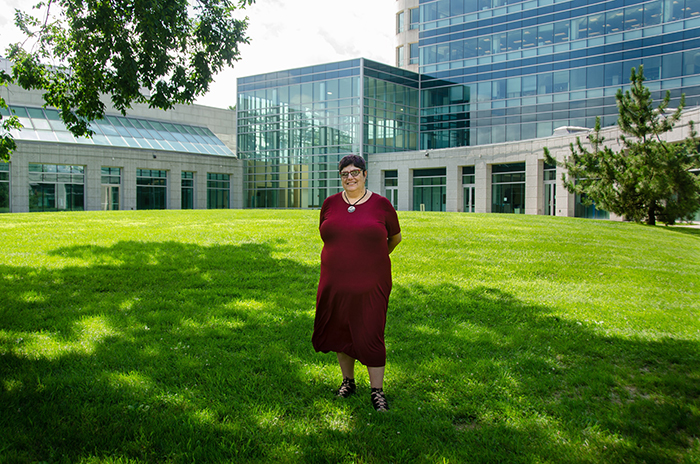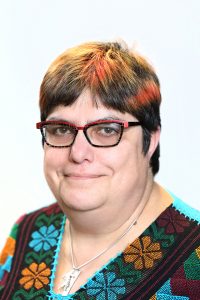 A division director at NIH, Dorit Zuk has a career that spans basic research, scientific publishing, and policy. She shares how she transitioned from different positions and advice for managing a team.
A division director at NIH, Dorit Zuk has a career that spans basic research, scientific publishing, and policy. She shares how she transitioned from different positions and advice for managing a team.
In the Decoding Life series, we talk to geneticists with diverse career paths, tracing the many directions possible after research training. This series is brought to you by the GSA Early Career Scientist Career Development Subcommittee.
Dorit Zuk is the poster child of what you can do with a biology PhD. After completing her training at the Wiezmann Institute in Israel, she moved to the US to conduct her postdoctoral training at the University of Massachusetts Medical School. While applying for faculty positions, she applied to be an editor at Cell on a whim—a decision that dramatically altered her career path. After serving as an editor, she became a AAAS (American Association for the Advancement of Science) Fellow, and subsequently worked on policy with the American Academy of Arts and Sciences, NIH, and National Center for Advancing Translational Sciences. After working with the NIH for seven years, she became the division director of Genetics and Molecular, Cellular and Developmental Biology at the National Institute of General Medical Sciences (NIGMS), where she leads a team of scientists to determine how research funding will be allocated.
You refer to your career path as a “random walk” career. Why is that?
It started very serendipitously—but the point of serendipity is that you have to act on it. When I was a postdoc, I went to the Molecular Cell website to find an article that was missing from Pubmed, and while I was there, I saw a job ad to be an Editor at Cell. At the time, I had been applying for faculty jobs and had gotten some interviews, but I figured being an Editor at Cell would be exciting, and if I didn’t like it, I could go back to the lab.
I really liked taking a broad view on science as an editor. After about seven years as an editor at Cell and Molecular Cell, I learned of the AAAS fellowship and that anybody at any career stage could apply. I was looking for something different to do after my years at Cell, so I applied for the AAAS Science and Technology Policy fellowship. I took a similar approach as before: I decided that if I didn’t like it, I could go back to editing. Working in policy allowed me to experience the sociological aspect of the biomedical research enterprise, and I found that I enjoyed it.
After the AAAS fellowship, I worked as a program director at the American Academy of Arts and Sciences. I did the most diverse things you can ever think of as program director; I worked on topics around philanthropy in the public school system, and even nuclear energy. While I enjoyed the work, it helped me realize that what I really care about is the biomedical research enterprise. In 2009, I was offered the position of science policy adviser to the Deputy Director for Extramural Research at the NIH. In 2015, the opportunity came up to apply for director of the Division of Genetics and Molecular, Cellular, and Developmental Biology at NIGMS. Looking at the job description, I found that the research funded by NIGMS overlapped with the research I worked with as an editor at Molecular Cell. In a way, this position brought me back to my scientific roots while bringing my experience in policy and science administration to the job. I’ve been here since January 2016—and that’s my “random walk” career.
What does a position as Division Director at the NIGMS involve?
I have to think broadly about the genetics, molecular, cellular, and developmental biology research that we fund through Research Project (R01) grants. I spend time thinking about how to allocate the funding based on the vision of the NIGMS, and I then make decisions, together with my team, on what science we should be funding. I directly manage three people in my division, but there are 15 total program directors who each have portfolios of science that we fund. At any one time, we fund about 2200 R01s.
I am involved in funding decisions for R01 applications, which start out being reviewed by the Center of Scientific review. They go through a second round of review at our council, where I’m involved in presenting the research. The council provides oversight to ensure that the initial review for scientific and technical merit conducted by the study section was fair and in compliance with policy. NIGMS has a philosophy of trying to fund as many people as possible. We often award people who don’t have other funding before people who have a lot of other funding, even if they did differently in review. I’m involved in making these decisions.
What are your visions as a leader of a team?
A good team is one in which everyone works together towards common and well-understood goals while each member is also able to develop individual interests and skills. My first principle is to respect everyone. Number two is to know what you want to achieve and to have a clear idea of how to get there; it’s very hard to steer a group if you don’t know where you’re going. Once the main goal is clear, you should discuss it with your team early and often and revise goals based on their input so you’re all moving towards the goal together. Thirdly, celebrate successes both small and large rather than waiting for something huge to come through. My final principle is that communication is everybody’s responsibility. It’s important to ask questions and to tell people what you’re doing. Don’t assume people will communicate with you; it’s your responsibility too.
How do you interact with science as a Division Director at NIGMS?
As a Director, I’m taking a broad view of the science I encounter. I am less concerned about the specifics of experiments and more interested in the main questions—and whether the science that’s being proposed can answer those questions. I read grant applications at the level of evaluating the main question and what the specific field is thinking about. I find the work most interesting when areas of science collide. For example, it took the collision of biochemistry and chromatin biology to understand how transcription happens in the context of the chromatin. Those are the things that I find most interesting. I read primary literature and reviews, and I talk to a lot of people.
Do you have any advice for early career scientists having a tough time choosing a career path?
I’m going to use an analogy of climbing a mountain, where the goal is reaching the top of the mountain. There are two ways to approach this: one is you can go straight to the top as quickly as you possibly can, and the other is a switchback approach. In the latter approach, you may go to the left and then to the right—but you’re always going upwards. Even though the former is a linear path, that person may or may not get as high up the mountain as the person who takes the switchback approach. I see myself as a person who likes switchbacks; I enjoy the journey and seeing different things along the way. I think it is important that early career scientists recognize that those two approaches exist and they’re both legitimate.

Dorit Zuk in her convertible car, one of the three things she had dreamed of having when she was younger.
What were some of your earliest life goals?
When I was younger I had three dreams: I wanted my own lab, a convertible, and a porch swing. I didn’t have my own lab, but I did have my own journal, and now I have my own vision. I have a convertible. I had a porch swing at some point, but I got rid of it because it was uncomfortable.
About the author:
![]() Didem Sarikaya is the Co-Chair of the Early Career Scientist Career Development Committee and an FRSQ Postdoctoral Fellow at the University of California Davis. She is committed to bringing forward stories and tools for trainees to learn more about career options so they can develop personally meaningful career trajectories.
Didem Sarikaya is the Co-Chair of the Early Career Scientist Career Development Committee and an FRSQ Postdoctoral Fellow at the University of California Davis. She is committed to bringing forward stories and tools for trainees to learn more about career options so they can develop personally meaningful career trajectories.
Learn more about the GSA’s Early Career Scientist Leadership Program.
































